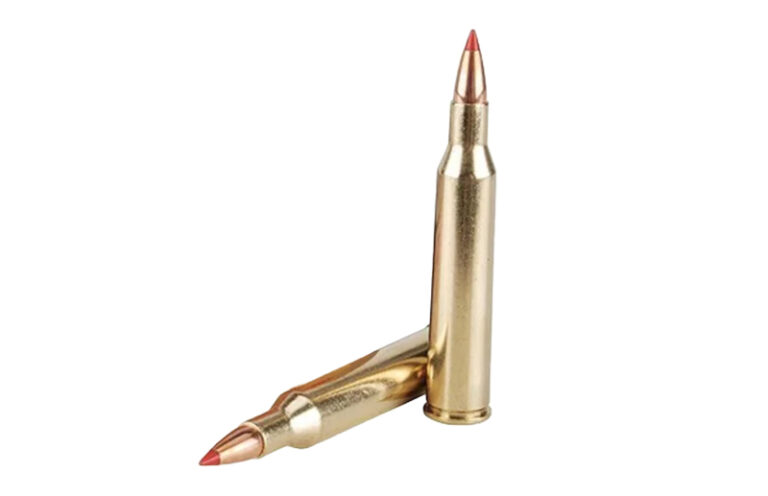
Once upon a time, nothing moved faster than .220 Swift, but is there any reason to still use it today?
At one point, .220 Swift was the fastest factory-loaded cartridge on the market. Today, this once-proud speed demon languishes, forgotten and unloved by the contemporary shooting public.
Are modern shooters overlooking an absolute gem? A powerhouse of prairie dog and paper punching?
Or is this relic better off sunsetting, having had its day and now rightfully taking its place on the ash heap of history?
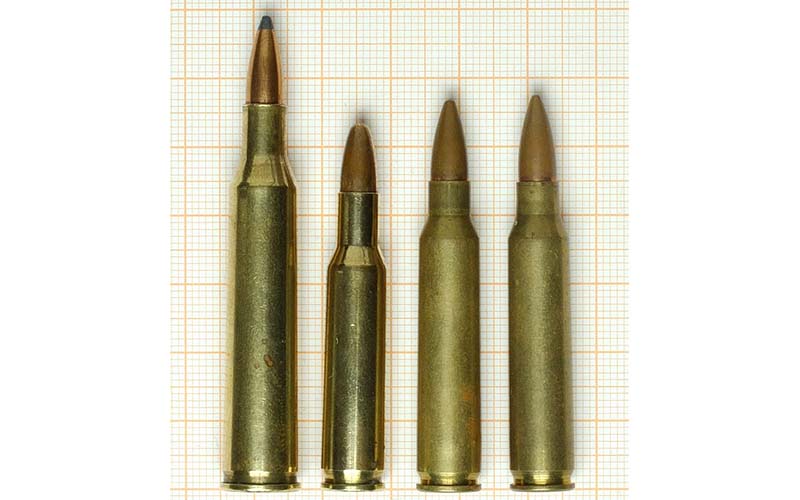
History Of .220 Swift
The .220 Swift was developed largely by Grosvenor Wotkyns, who in the early- to mid-1930s was experimenting with necking cartridges down to .224 caliber to achieve higher velocities. The load he worked up, along with J.E. Gebby and J.B. Smith, necked a .250-3000 Savage case down to .224 caliber.
These gentlemen developed various wildcat loads based on this concept, but Wotkyns’ was called .22 Wotkyns Original Swift and it gained a bit of attention as a varmint and possible light-skinned game round. Ammunition and gun companies noticed, and Remington and Winchester both thought they'd put their own spin on it.
Remington decided to keep .250-3000 Savage as the parent case and dubbed its new cartridge .22-250 Remington.
Winchester decided to change the case from .250-3000 Savage to 6mm Lee Navy since the company was the principal supplier to the U.S. government and had plenty of brass on hand. Winchester dubbed this new cartridge .220 Swift.
The original factory load, first offered in 1935 in the Model 54 rifle, was a 48-grain bullet at an astonishing 4,100 feet per second out of a 26-inch barrel.
The .220 Swift In Its Heyday
The first couple of decades were the peak years of .220 Swift. It swiftly (ha!) gained a reputation for excellent accuracy, wicked efficacy on varmints at long range and some potential as a smaller game round.
Jack O'Connor had high praise for the .220 Swift, as one of his personally owned Model 70 rifles was chambered for it. He considered it the “best of all varmint cartridges,” with excellent accuracy, a very flat trajectory and impressive range compared to other varmint calibers.

P.O. Ackley was an unabashed fan of .220 Swift, creating a 50-grain projectile for game hunting as well as his own variant called .220 Ackley Improved. It was his favorite cartridge for deer hunting.
Lester Womack, a park ranger and gunsmith, culled wild burros using Ackely's 50-grain bullets and found the .220 Swift a better tool for the job than .30-06 and other full-power cartridges that were popular at the time.
W.D.M. “Karamojo” Bell, the famous ivory hunter, adored the .220 Swift and used it extensively to hunt red stags on his estate in Scotland.
However, not everyone was necessarily a fan.
The .220 Swift quickly wore out barrels in most rifles, though advances in materials would later mitigate throat erosion to a good degree.
While advanced shooters who used it for game hunting loved it, reality is a harsh mistress and most people aren't in Karamojo's class of marksmanship.
O'Connor also noted, “Much big game was killed with it, and killed very dead, but much big game was lost.” Robert Ruark, at one point one of the world's foremost authorities on hunting and hunting rifles, had little love for .220 Swift which influenced his advocacy of “using enough gun” and larger cartridges.
In short, the rifle cognoscenti of the day realized its virtues, but also that it had real limitations.
.220 Swift Ballistics: What Is It Good For?
Based on its ballistic properties, what exactly is .220 Swift good for? On paper, it makes a fantastic light game cartridge for moderate ranges, but where this cartridge truly excels is for varmints. It would also make a coyote culler par excellence.
Here's a trajectory table from ShootersCalculator, presuming a 100-yard zero, 1.5-inch bore offset, a 10 mph 90-degree crosswind and zero corrections for atmosphere. This was calculated using the Federal Varmint 40-grain Nosler Ballistic Tip load:
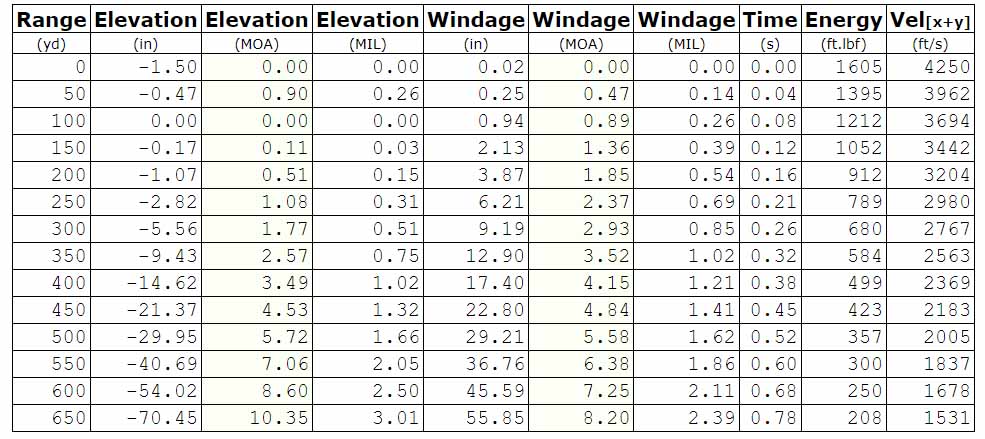
While a G1 ballistic coefficient of 0.221 is not impressive, the trajectory sure is. With a starting velocity of 4,250 feet per second, it doesn’t dip below the sound barrier until past 825 yards. At 500 yards, it still has more energy than some 9mm loads have at the muzzle.
However, as you can also see, it will get pushed around by wind early and often. This is why the .220 Swift has always excelled the most when the rifle is paired with a scope with enough reticle to place shots accurately.
Unfortunately, there are no factory loadings that improve on the above table more than incrementally. While some other calibers can easily remedy their performance in high-wind conditions by using heavy-for-caliber, high-BC ammunition, there are no factory options like this for .220 Swift. Currently, the heaviest factory ammo available features 55-grain projectiles. The only way to up the weight would be with handloads, and that would also require a custom rifle with a fast enough twist rate to stabilize them. Doable, and the results can be impressive on paper, but it’s probably not worth the effort today given other options.
For instance, the .22-250 Remington can do about 95 percent of what .220 Swift does, all while being more affordable, more available and putting less wear on barrels. For comparison, here’s a trajectory chart pitting the previous .40-grain .220 Swift load against .22-250 Remington loaded with the same Nosler projectile. The initial velocity provided by Nosler is 3,950 fps using a 24-inch barrel, so performance would be even more similar if using the 26-inch barrel used to calculate .220 Swift’s muzzle velocity.
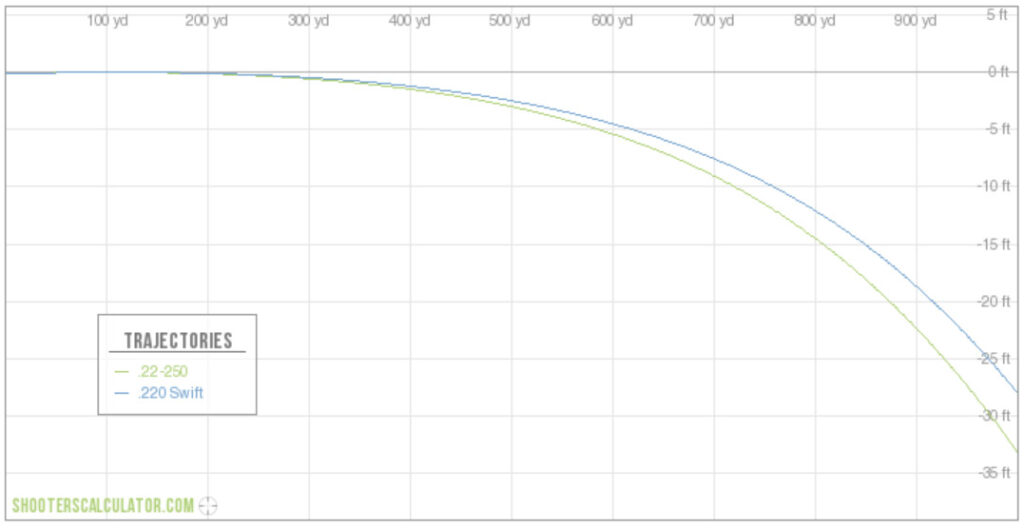
How Available Is .220 Swift Ammo?
When it comes to ammo, MidwayUSA lists five loads, none of which are available at the time of writing. A few are available on AmmoSeek, but slim pickings are your lot unless you handload.
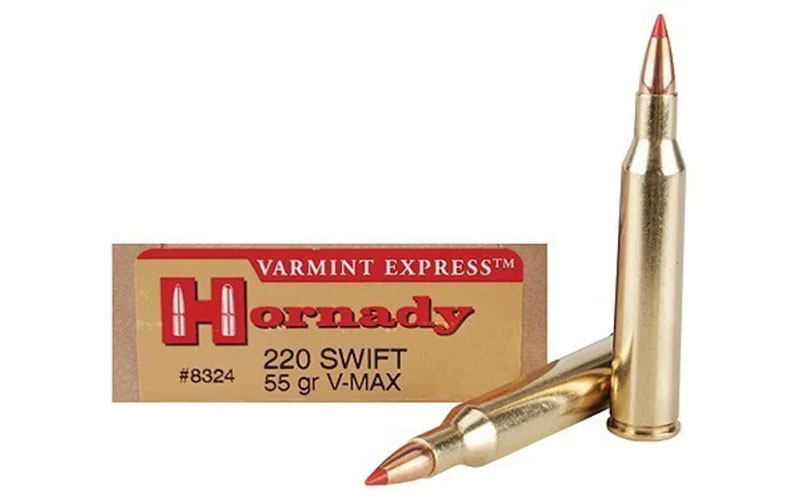
When you can find it for sale, it's not terrifically expensive, but it's certainly not cheap. Expect to pay $30 to $50 per box of 20, which isn't awful in the rifle realm but isn't outstanding either.
Good Reasons To Get A .220 Swift Rifle?
Besides long-range varmint shooting and coyote control, the .220 Swift would also make an excellent youth hunting rifle at moderate ranges. Beyond that, it is an expert's rifle given the marksmanship requirements for game shooting.
Then again, so are .243 Winchester, 7mm-08 and 6.5mm Creedmoor, which are vastly more forgiving, and other varmint cartridges like .22-250 will send prairie dogs to the great burrow in the sky just as effectively.
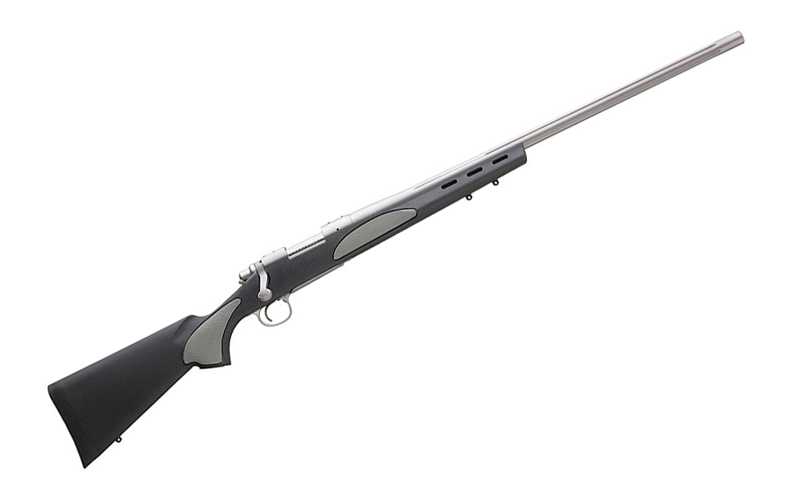
While .220 Swift rifles can be found on the secondhand market, new-production guns are basically nonexistent today. Remington may still offer a 700 variant chambered for it, as some are still available online at the time of writing, but it's not listed on the company's website.
The .220 Swift Has Had Its Day
.220 Swift is dead or dying. There is literally no use-case for which there aren't alternatives that are—in the real world—just as good, if not better, and more practical. Prairie dogs can't tell the difference between a bullet traveling at 4,000 fps and 3,600 fps, and neither can a coyote.
There is and was never anything wrong with .220 Swift, there’s simply nothing that it excels well enough at to justify using it instead of a similar and more available cartridge today. Just like you could still write a letter using a typewriter, you can still drop varmints with a .220 Swift, there’s just no real good reason to use either in a world with .22-250 and personal computers.
Raise Your Ammo IQ:
- Beyond The 6.5 Creedmoor: The Other 6.5 Cartridges
- Ammo Brief: The Versatile .243 Winchester
- The Lonesome Story Of The Long-Lost 8mm
- Why The .300 H&H Magnum Still Endures
- .350 Legend Vs .450 Bushmaster: Does One Win Out For Hunting?

Next Step: Get your FREE Printable Target Pack
Enhance your shooting precision with our 62 MOA Targets, perfect for rifles and handguns. Crafted in collaboration with Storm Tactical for accuracy and versatility.
Subscribe to the Gun Digest email newsletter and get your downloadable target pack sent straight to your inbox. Stay updated with the latest firearms info in the industry.

![Best Concealed Carry Guns In 2025 [Field Tested] Wilson Combat EDC X9S 1](https://gundigest.com/wp-content/uploads/Wilson-Combat-EDC-X9S-1-324x160.jpg)


![Best 9mm Carbine: Affordable PCCs [Tested] Ruger Carbine Shooting](https://gundigest.com/wp-content/uploads/Ruger-Carbine-Shooting-100x70.jpg)
![Best AR-15: Top Options Available Today [Field Tested] Harrington and Richardson PSA XM177E2 feature](https://gundigest.com/wp-content/uploads/Harrington-and-Richardson-PSA-XM177E2-feature-100x70.jpg)

I had a Remington Classic chambered in 220 Swift. The rounds would occasionally rim lock in the magazine. I learned the 220 Swift is semi-rimmed. I grew tired of the rifle rimlocking and sold it. The Remington Classic had a “24 barrel and velocity between my 788 Remington 22-250 with a “24 inch barrel and 220 Swift with factory rounds were basically the same. I also own a Browning 223 WSSM with a “24 barrel. With factory ammunition the 223 WSSM is the speed king outclassing the 220 Swift and 22-250 with same weight bullets. It should outclass them. The 223 WSSM has a much larger case capacity and reloading manuals will bear this out. Bullet for bullet the 223 WSSM is the fastest 22 cartridge I have ever owned. And yes, I own a chronograph. The rate of twist on the 223 WSSM is 1:10 and will spin apart some lighter weight bullets. The new 22 Creedmoor looks interesting, however, with an even faster 1:8 rate of twist I suspect it will be very hard on lightweight bullets.
The .220 Swift sunsetting is as likely as Biden forming a coherent sentence. The .220 Swift is the king of speed and outdoes everything .224 with class and nostalgia. The Swift cult is strong and growing. Those who are in the know are proud members and those who are not buy rifles chambered in inferior cartridges.